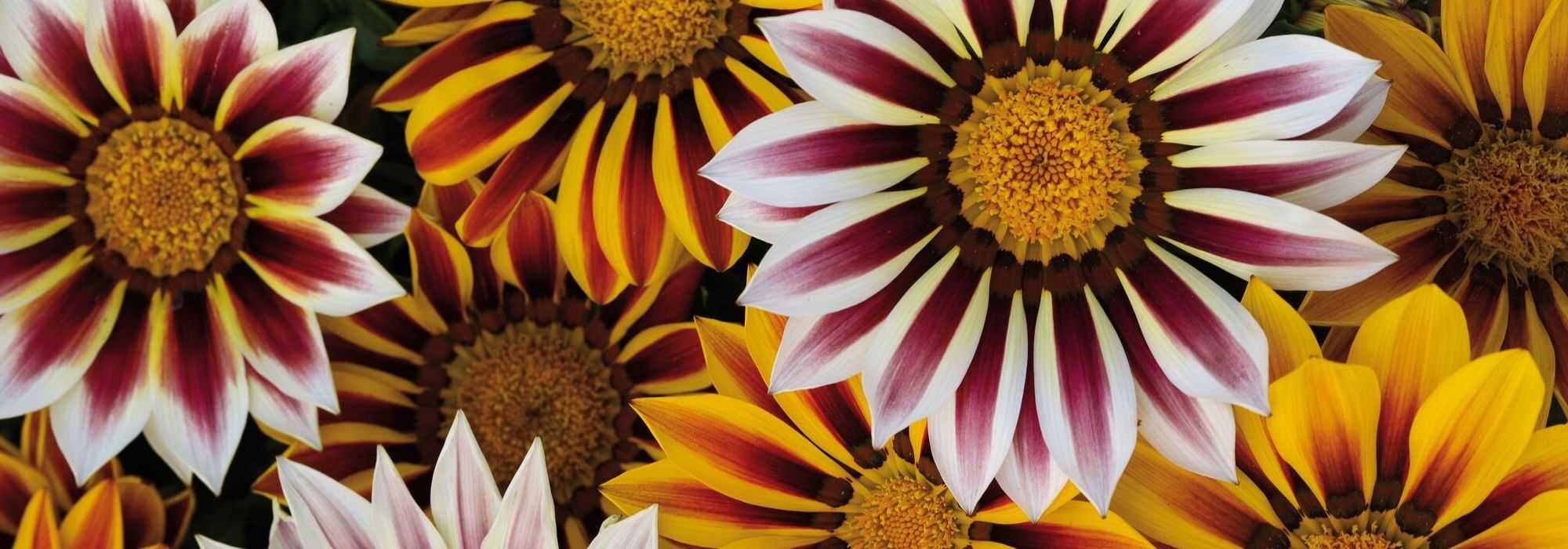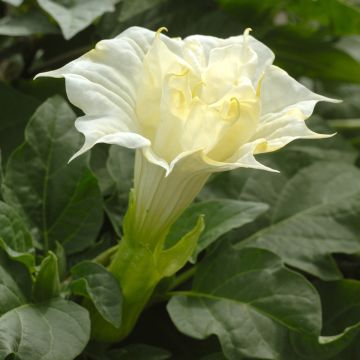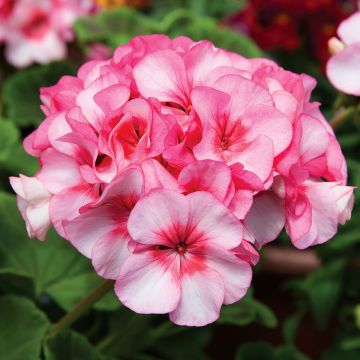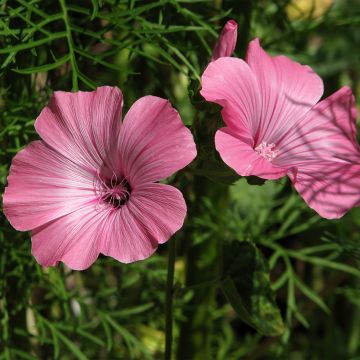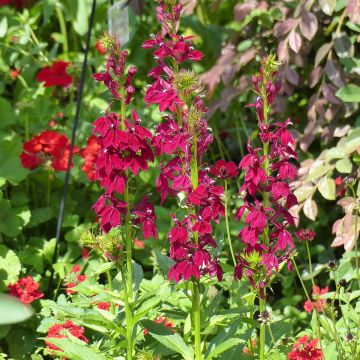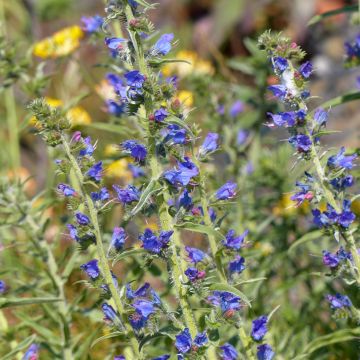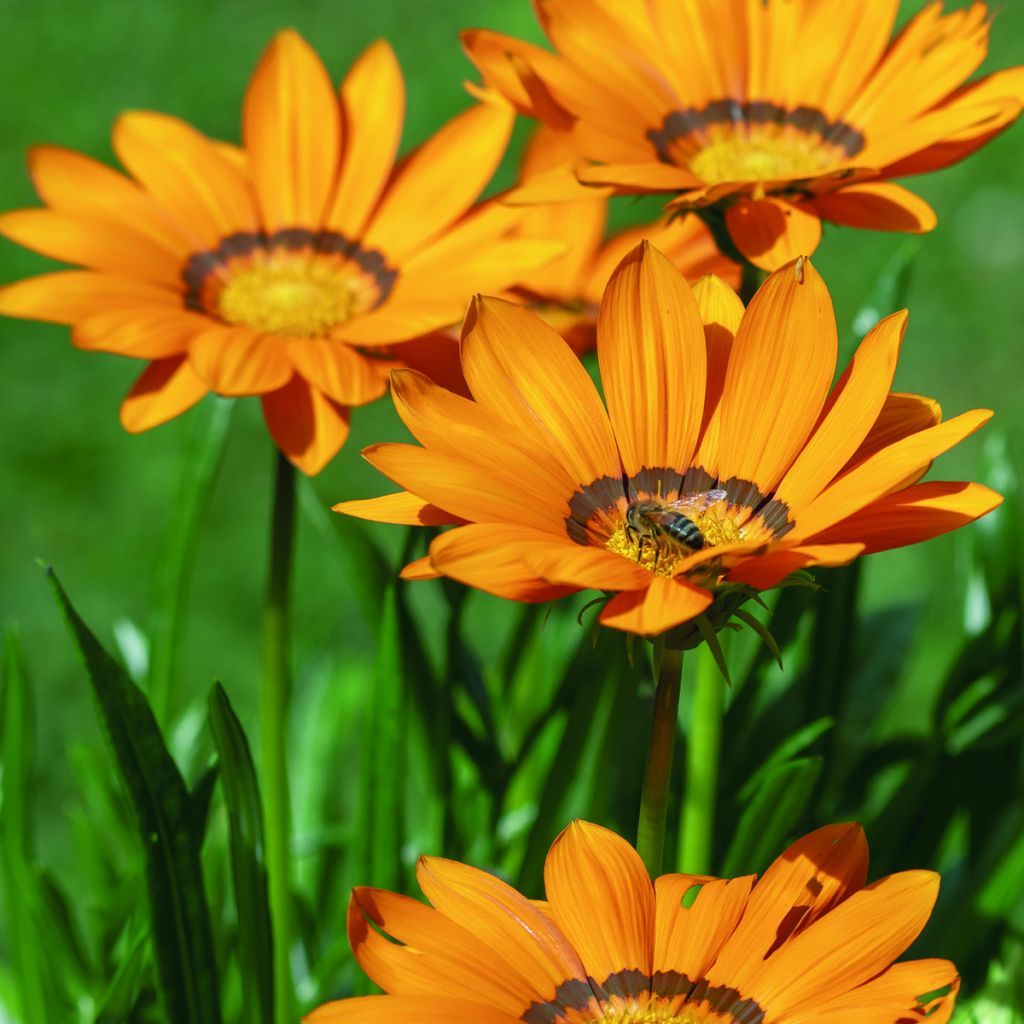

Gazania rigens Zany F1 Orange (coated seeds) - Treasure Flower
Gazania rigens Zany F1 Orange (coated seeds) - Treasure Flower
Gazania rigens Zany Orange
Treasure Flower, African Daisy
Special offer!
Receive a €20 voucher for any order over €90 (excluding delivery costs, credit notes, and plastic-free options)!
1- Add your favorite plants to your cart.
2- Once you have reached €90, confirm your order (you can even choose the delivery date!).
3- As soon as your order is shipped, you will receive an email containing your voucher code, valid for 3 months (90 days).
Your voucher is unique and can only be used once, for any order with a minimum value of €20, excluding delivery costs.
Can be combined with other current offers, non-divisible and non-refundable.
Home or relay delivery (depending on size and destination)
Schedule delivery date,
and select date in basket
This plant carries a 6 months recovery warranty
More information
We guarantee the quality of our plants for a full growing cycle, and will replace at our expense any plant that fails to recover under normal climatic and planting conditions.
Does this plant fit my garden?
Set up your Plantfit profile →
Description
Gazania Zany F1 Orange is a hybrid variety of this Mediterranean perennial, distinguished by its very compact habit and the beauty and abundance of its flowers. The beautiful dark green foliage forms a perfect setting for the orange flowering, enhanced by a central brown ring. Sown early in spring under heated cover, the seeds produce rapidly growing young plants, capable of flowering as early as May or June. Until autumn, the flowers are constantly renewed and enchant flower beds and rockeries. Its low habit also makes it ideal for creating flowering planters or pots to adorn a terrace or balcony. This beautiful plant is very heat-resistant and prefers sunny exposures.
Native to South Africa, Gazania belongs to the vast Asteraceae family, which boasts over 23,000 species! It includes many ornamental plants such as the popular Asters or the more niche Farfugium, which delights collectors. Many wild species from our countryside also belong to it, as do food plants (lettuce, artichoke...) and aromatic herbs like Artemisia. Gazania rigens is probably the most commonly cultivated among the 18 botanical species of the genus. It is also known by other names such as G. splendens, Gorteria rigens, or Othonna rigens. It loves heat and full sun — an essential condition for its flowers to open — and tolerates dry periods well due to its geographical origin.
The Zany series is a horticultural range of hybrids specifically developed by breeders for their flowering. Gazania Zany F1 Orange is a version with uniformly orange flowers, whose centre is bordered by an orange ring. In reality, as with all plants in this family, this inflorescence is a head, composed of narrow tubular flowers tightly packed together in the centre, surrounded by tubular flowers all around the periphery (which are often mistaken for petals). For this reason, the family was formerly known as the Compositae. Spring sowing produces young plants that form dense clumps, with satiny dark green foliage, reaching no more than 20 cm in height and a similar or greater width. The young Gazanias begin to flower from May, for the earliest sowings. Compound flowers of approximately 7 cm in diameter bloom, borne on short stems that allow them to largely cover the foliage. The ligulate flowers around the edge are a bright orange, marked near the base with a brown spot, forming a ring around the centre, which is made up of tubular flowers of the same colour as the ligulate ones. Flowering continues until September-October, and even longer if faded flowers are removed regularly and a regular potassium fertiliser is applied (liquid feed).
Sowing the seeds of Gazania rigens Zany F1 Orange will ensure long-lasting flowering at low cost. Except in Mediterranean regions, you should treat it as an annual to enjoy its brilliant flowering throughout the season. Plant it in containers, alone or alongside other summer annuals like Bacopa with its many small single flowers, or in the company of Petunia and Surfinia, with their colourful and generous blooms. In southern regions, you can treat it as a perennial by integrating it into mixed borders, with shrubs like Lantana with its astonishing multicoloured flowers, or other perennials such as Euryops with its ball-shape, Mediterranean plants, or the very architectural Leonotis leonorus with its ranks of orange flowers. Gazania adapts easily to coastal areas, where it can grow in sandy, light, poor soils, while tolerating drought, full sun, wind, and sea spray well. Coated seeds guarantee good germination and make your sowing more successful.
Flowering
Foliage
Plant habit
Botanical data
Gazania
rigens
Zany Orange
Asteraceae
Treasure Flower, African Daisy
Gazania splendens, Gorteria rigens, Othonna rigens
Cultivar or hybrid
Planting and care
Sow the seeds of Gazania Zany F1 Orange, after soaking for a few hours, under glass or in an indoor propagator, from February to April, under 3 mm of a mixture of compost and sand. Keep them in a warm place, ideally with a temperature between 18 and 25°C. Keep the compost slightly moist but not excessively. You will need to wait 14 to 30 days to see the young seedlings appear. When they are large enough to handle, transplant them into pots and acclimatise them for about ten days. After that, you can plant them out in the open ground when the last frosts are no longer a problem. Take care to space each young plant 20 to 30 cm apart.
Growing: in full sun, in ordinary but well-drained soil, possibly lightened with gravel, sand and compost. Gazanias don't like stagnant moisture; avoid leaving saucers filled with water under the pots. A special fertiliser for flowering plants will be appreciated every 4 to 6 weeks to support flowering.
The plant is perennial in mild Mediterranean conditions, particularly on the coast. Choose its permanent location when planting to form increasingly wide clumps over the years.
Sowing period
Intended location
Planting & care advice
This item has not been reviewed yet - be the first to leave a review about it.
Similar products
Haven't found what you were looking for?
Hardiness is the lowest winter temperature a plant can endure without suffering serious damage or even dying. However, hardiness is affected by location (a sheltered area, such as a patio), protection (winter cover) and soil type (hardiness is improved by well-drained soil).

Photo Sharing Terms & Conditions
In order to encourage gardeners to interact and share their experiences, Promesse de fleurs offers various media enabling content to be uploaded onto its Site - in particular via the ‘Photo sharing’ module.
The User agrees to refrain from:
- Posting any content that is illegal, prejudicial, insulting, racist, inciteful to hatred, revisionist, contrary to public decency, that infringes on privacy or on the privacy rights of third parties, in particular the publicity rights of persons and goods, intellectual property rights, or the right to privacy.
- Submitting content on behalf of a third party;
- Impersonate the identity of a third party and/or publish any personal information about a third party;
In general, the User undertakes to refrain from any unethical behaviour.
All Content (in particular text, comments, files, images, photos, videos, creative works, etc.), which may be subject to property or intellectual property rights, image or other private rights, shall remain the property of the User, subject to the limited rights granted by the terms of the licence granted by Promesse de fleurs as stated below. Users are at liberty to publish or not to publish such Content on the Site, notably via the ‘Photo Sharing’ facility, and accept that this Content shall be made public and freely accessible, notably on the Internet.
Users further acknowledge, undertake to have ,and guarantee that they hold all necessary rights and permissions to publish such material on the Site, in particular with regard to the legislation in force pertaining to any privacy, property, intellectual property, image, or contractual rights, or rights of any other nature. By publishing such Content on the Site, Users acknowledge accepting full liability as publishers of the Content within the meaning of the law, and grant Promesse de fleurs, free of charge, an inclusive, worldwide licence for the said Content for the entire duration of its publication, including all reproduction, representation, up/downloading, displaying, performing, transmission, and storage rights.
Users also grant permission for their name to be linked to the Content and accept that this link may not always be made available.
By engaging in posting material, Users consent to their Content becoming automatically accessible on the Internet, in particular on other sites and/or blogs and/or web pages of the Promesse de fleurs site, including in particular social pages and the Promesse de fleurs catalogue.
Users may secure the removal of entrusted content free of charge by issuing a simple request via our contact form.
The flowering period indicated on our website applies to countries and regions located in USDA zone 8 (France, the United Kingdom, Ireland, the Netherlands, etc.)
It will vary according to where you live:
- In zones 9 to 10 (Italy, Spain, Greece, etc.), flowering will occur about 2 to 4 weeks earlier.
- In zones 6 to 7 (Germany, Poland, Slovenia, and lower mountainous regions), flowering will be delayed by 2 to 3 weeks.
- In zone 5 (Central Europe, Scandinavia), blooming will be delayed by 3 to 5 weeks.
In temperate climates, pruning of spring-flowering shrubs (forsythia, spireas, etc.) should be done just after flowering.
Pruning of summer-flowering shrubs (Indian Lilac, Perovskia, etc.) can be done in winter or spring.
In cold regions as well as with frost-sensitive plants, avoid pruning too early when severe frosts may still occur.
The planting period indicated on our website applies to countries and regions located in USDA zone 8 (France, United Kingdom, Ireland, Netherlands).
It will vary according to where you live:
- In Mediterranean zones (Marseille, Madrid, Milan, etc.), autumn and winter are the best planting periods.
- In continental zones (Strasbourg, Munich, Vienna, etc.), delay planting by 2 to 3 weeks in spring and bring it forward by 2 to 4 weeks in autumn.
- In mountainous regions (the Alps, Pyrenees, Carpathians, etc.), it is best to plant in late spring (May-June) or late summer (August-September).
The harvesting period indicated on our website applies to countries and regions in USDA zone 8 (France, England, Ireland, the Netherlands).
In colder areas (Scandinavia, Poland, Austria...) fruit and vegetable harvests are likely to be delayed by 3-4 weeks.
In warmer areas (Italy, Spain, Greece, etc.), harvesting will probably take place earlier, depending on weather conditions.
The sowing periods indicated on our website apply to countries and regions within USDA Zone 8 (France, UK, Ireland, Netherlands).
In colder areas (Scandinavia, Poland, Austria...), delay any outdoor sowing by 3-4 weeks, or sow under glass.
In warmer climes (Italy, Spain, Greece, etc.), bring outdoor sowing forward by a few weeks.






























